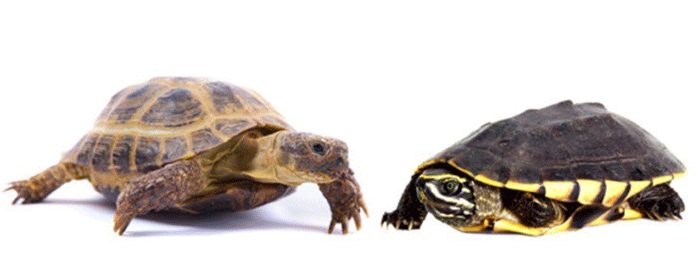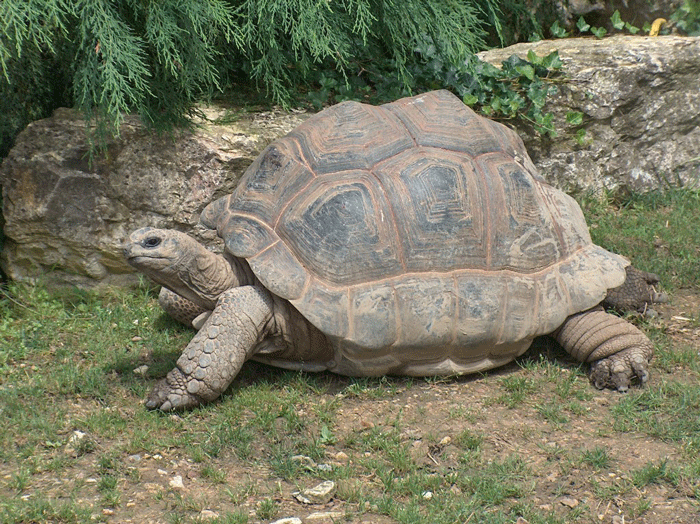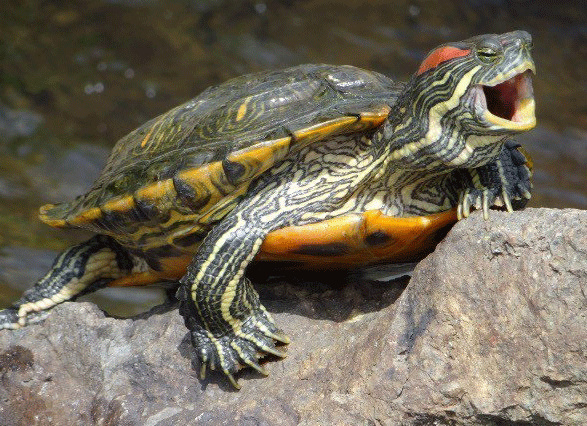
As I write this Tuesday morning I wonder how many of you got much sleep last night? Thank goodness our little corner of Oklahoma was spared any severe weather and our prayers go out to those suffering with tornado and flood damage throughout the state!
The fishing reports I’ve gotten from Lake Waurika have been great on the north area, especially around the island, despite the high water levels. I know Houston Scott and Slade Cathey have been slaying the crappie and bass the last few weeks on their ponds.
On another note, please remember that the Farmer’s Market will take place this weekend after being cancelled last Saturday because of weather! Come out and support our local folks.
I happened on an interesting article last week about turtles and tortoises I think you will find informative.
A tortoise is a turtle but a turtle is not necessarily a tortoise. Confusing isn’t it?
The tongue twister of the relationship between turtles and tortoises is the same as those two boxy geometric shapes we learned in elementary school. A tortoise is a turtle just like a square is a rectangle, but a turtle is not a tortoise just like a rectangle is not always a square.
“Turtle” is a broad term that can refer to any reptile with a shell. However, the classification can be further broken down into types of turtles. Confusingly, a turtle is a type of turtle. Tortoises and terrapins are the other two kinds of turtles.

If you look at the larger picture, all turtles are reptiles with a shell, and therefore all tortoises are turtles–in the broadest sense of the word. However, in the smaller scope of things, when you divide the larger category into three different types, you see that a turtle is not necessarily a tortoise or even a turtle, because it can be a terrapin instead.
Are you confused yet? Let’s leave our vocabulary lesson behind for now and dive right into the science of things. In order to have divisions of these reptiles, they have to have different characteristics.
Distinguishing attributes of the feet, shell and habitat help to tell these reptiles apart. The most obvious distinction is where they live. Tortoises live on land. Turtles can live in water or land, with some species being almost solely aquatic.

As terrestrial individuals, tortoises adapted flat feet to more easily traverse the landscape. For life in the water, turtles have at least some degree of webbing between their toes–even full-fledged flippers in the most aquatic individuals.
Box turtles spend a lot of time on land and so are often mistaken for tortoises. But, they have slightly webbed feet, making them turtles!
The last difference between turtles and tortoises is shell shape. Because turtles spend time in the water, their shells are flatter for stream-lined swimming. A tortoise has more of a dome shape to its shell. As Box turtles spend most of their life on land, their shells look more like an Aldabra tortoise than a red-eared slider.
To clarify things even further, the tortoise shell pattern seen on sunglasses is not actually made from tortoises. It was made from turtles–the hawksbill sea turtle, specifically. Nowadays, the species is protected and so that material is just plastic.

The shape of a turtle’s body with regard to its feet and shell can offer understanding of its habitat. It also helps you classify if it is indeed a turtle or a tortoise! To simplify-they are all TURTLES!
Don’t forget the Farmer’s Market this weekend and certainly keep in mind those that have gone before us and our Veterans who gave it all!
In the meantime get out and enjoy our great Oklahoma outdoors!